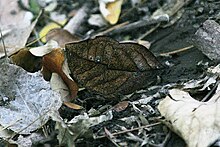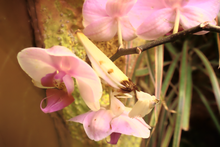GENESIS 30:37-41 ANIMAL COLORATION
Animal Color Change
The Principles of Animals Coloration mention in the Bible
And Jacob took him rods of green poplar, and of the hazel and chestnut tree; and pilled white strakes in them, and made the white appear which was in the rods.And he set the rods which he had pilled before the flocks in the gutters in the watering troughs when the flocks came to drink, that they should conceive when they came to drink. And the flocks conceived before the rods, and brought forth cattle ringstraked, speckled, and spotted. And Jacob did separate the lambs, and set the faces of the flocks toward the ringstraked, and all the brown in the flock ofLaban; and he put his own flocks by themselves, and put them not unto Laban's cattle. And it came to pass, whensoever the stronger cattle did conceive, that Jacob laid the rods before the eyes of the cattle in the gutters, that they might conceive among the rods. (Genesis 30:37-41)
Icelandic sheep come in a variety of colors. The sheep on the left carries at least one "black" allele on the color gene, two "solid" alleles on the pattern gene, and two "spotting" alleles on the spotting gene. The sheep on the right has at least one "white" allele on the pattern gene, which conceals any other colors and patterns it may have.
(S) The Spotting Gene. All Icelandic sheep inherit 1 gene for each factor from each parent, receiving 6 in total.
In the last section, we saw that the most basic form of camouflage is a coloration that matches an animal's surroundings. Of course, an animal's surroundings may change from time to time. Many animals have developed special adaptations that let them change their coloration as their surroundings change.
One of the biggest shifts in an animal's surroundings occurs with the changing of the seasons. In the spring and summer, a mammal's habitat might be full of greens and browns, while in the fall and winter, everything can be covered with snow. While brown coloration is perfect for a summer wooded environment, it makes an animal an easy target against a white background. Many birds and mammals deal with this by producing different colors of fur or feathers depending on the time of year. In most cases, either changing amounts of daylight or shifts in temperature trigger a hormonal reaction in the animal that causes it to produce different biochromes.

As the seasons change, the Arctic fox changes the color of its coat. In the spring and summer, it has a dark coat, to match the brown dirt in its environment. In the fall and winter, it turns white, to match the surrounding
Animal coloration is the general appearance of an animal resulting from the reflection or emission of light from its surfaces. Some animals are brightly coloured, while others are hard to see. In some species, such as the peacock, the male has strong patterns, conspicuous colours and is iridescent, while the female is far less visible.
There are several separate reasons why animals have evolved colours. Camouflage enables an animal to remain hidden from view. Signalling enables an animal to communicate information such as warning of its ability to defend itself (aposematism). Animals also use colour in advertising, signalling services such as cleaning to animals of other species; to signal sexual status to other members of the same species; and in mimicry, taking advantage of another species' warning coloration. Some animals use colour to divert attacks by startle (deimatic behaviour), surprising a predator e.g. with eyespots or other flashes of colour, and possibly by motion dazzle, confusing a predator's attack by moving a bold pattern (such as zebra stripes) rapidly. Some animals are coloured for physical protection, such as having pigments in the skin to protect against sunburn, while some frogs can lighten or darken their skin for temperature regulation. Finally, animals can be coloured incidentally. For example, blood is red because the haem pigment needed to carry oxygen is red. Animals coloured in these ways can have striking natural patterns.
Animals produce colour in different ways. Pigments are particles of coloured material. Chromatophores are cells containing pigment, which can change their size to make their colour more or less visible. Some animals, including many butterflies and birds, have microscopic structures in scales, bristles or feathers which give them brilliant iridescent colours. Other animals including squid and some deep-sea fish can produce light, sometimes of different colours. Animals often use two or more of these mechanisms together to produce the colours and effects they need.
One of the pioneers of research into animal coloration, Edward Bagnall Poulton classified the forms of protective coloration, in a way which is still helpful. He described: protective resemblance; aggressive resemblance; adventitious protection; and variable protective resemblance.These are covered in turn below.

A camouflaged orange oak leaf butterfly, Kallima inachus (centre) displays protective resemblance
Protective resemblance is used by prey to avoid predation. It includes special protective resemblance, now called mimesis, where the whole animal looks like some other object, for example when a caterpillar resembles a twig or a bird dropping. In general protective resemblance, now called crypsis, the animal's texture blends with the background, for example when a moth's colour and pattern blend in with tree bark.

A flower mantis, Hymenopus coronatus, displays special aggressive resemblance
Aggressive resemblance is used by predators or parasites. In special aggressive resemblance, the animal looks like something else, luring the prey or host to approach, for example when a flower mantis resembles a particular kind of flower, such as an orchid. In general aggressive resemblance, the predator or parasite blends in with the background, for example when a leopardis hard to see in long grass.
For adventitious protection, an animal uses materials such as twigs, sand, or pieces of shell to conceal its outline, for example when a caddis fly larva builds a decorated case, or when adecorator crab decorates its back with seaweed, sponges and stones.
In variable protective resemblance,an animal such as a chameleon, flatfish, squid or octopus changes its skin pattern and colour using special chromatophore cells to resemble whatever background it is currently resting on (as well as for signalling).
The main mechanisms to create the resemblances described by Poulton – whether in nature or in military applications – are crypsis, blending into the background so as to become hard to see (this covers both special and general resemblance); disruptive patterning, using colour and pattern to break up the animal's outline, which relates mainly to general resemblance; mimesis, resembling other objects of no special interest to the observer, which relates to special resemblance; countershading, using graded colour to create the illusion of flatness, which relates mainly to general resemblance; and counterillumination, producing light to match the background, notably in some species of squid.
Countershading was first described by the American artist Abbott Handerson Thayer, a pioneer in the theory of animal coloration. Thayer observed that whereas a painter takes a flat canvas and uses coloured paint to create the illusion of solidity by painting in shadows, animals such as deer are often darkest on their backs, becoming lighter towards the belly, creating (as zoologist Hugh Cott observed) the illusion of flatness,and against a matching background, of invisibility. Thayer's observation "Animals are painted by Nature, darkest on those parts which tend to be most lighted by the sky's light, and vice versa" is called Thayer's Law.
.jpg)


Comments
Post a Comment